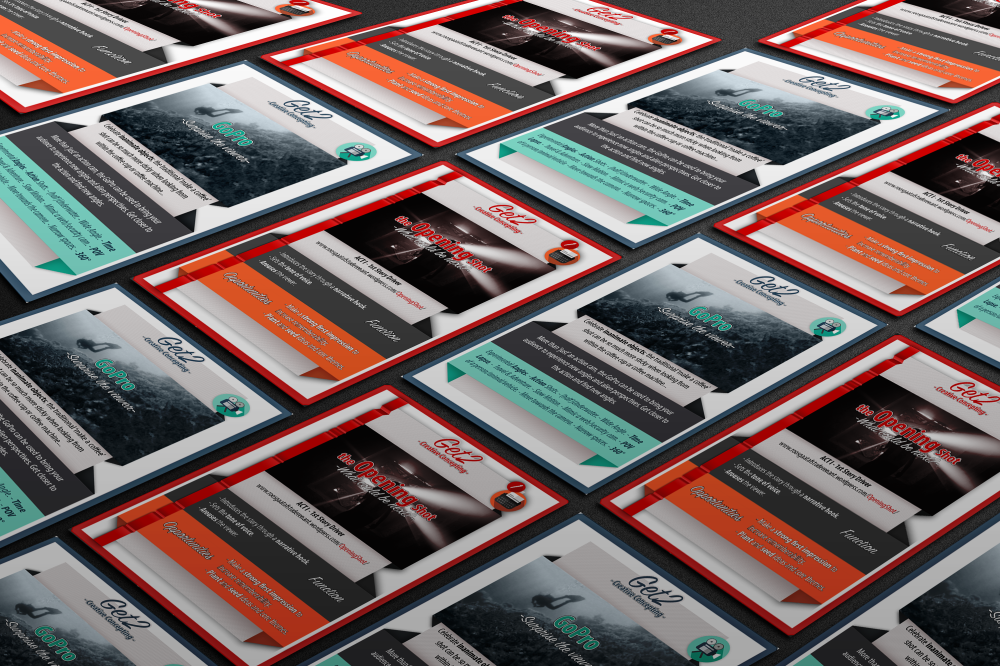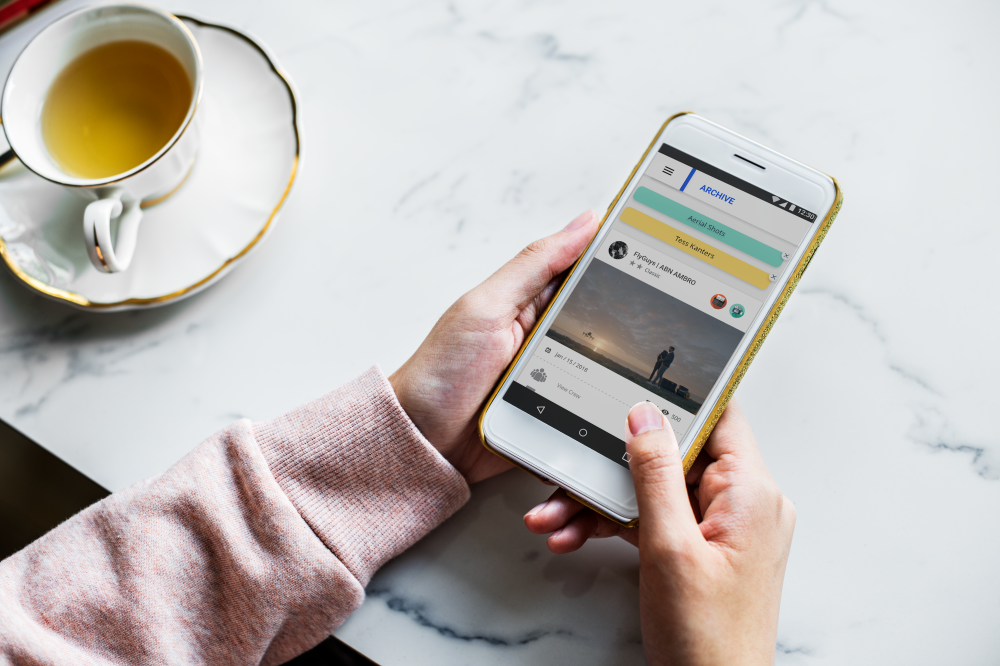How to keep an innovational and creative approach in corporate low-end ‘lite’ productions? This research has aimed to take a closer look at more creative means of expression within the constrictions of the limited low-end model.
Determining a visual style and planning a well-structured story are two of the most important pillars of a production proposal. However, these more creative tasks are difficult to ignite when answering client phone calls, tutoring interns and handling crew and equipment choices within the limitations of the low-end budget and time frame. However, if a workflow is designed for activating and motivating creative decisions within the low-end field, creativity can be implemented in a more effective habit-driven manner. The ‘lite‘ productions get more varied and the 1camera staff gets more experienced with creative expression without the unforeseen loss of time creative processes occupy without set guidelines.
Results
Research has indicated that, as of currently, there is a notable difference in the understanding of story structure and the level of demonstrated creative comfort within the 1Camera staff. Research has also indicated that creative techniques can be learned, constructed and applied with the help of, and much exposure to, analogue tools such as cards, and that creative comfort could be influenced by the ‘fun’ element of a gamified solution.
Recommendation #1 | Make Creativity part of the team.
Looking out for creative opportunities is important when operating in the creative sector which is driven by constant change and development. Especially when the work becomes routine and the crew becomes familiar with a clients feedback and taste. Therefore, introducing a gamified workflow which stimulates the application of creativity is a more than interesting opportunity. There are many tools available for creative impact, and such tools can be crafted and personalised easily. By investing in such tools and having creative equipment accessible, opportunities arise for employees to act upon these. As creativity takes practice, employees should be motivated to think about and reflect upon their creative flow.
The cards designed in this research are by no means the solution for increasing creative impact, however, the fundamental idea behind the cards comes close. The idea that deep understanding of the basic film making components leads to experimentation. Being able to recognize and call upon visual and story components, to then take those out of context and mix with something else entirely, can be a tool for innovation. The results of this research do not recommend that the cards should be applied for each and every production. However, interacting with, and thinking deeply about visual- and story-components is often times missing, and a game-like format of interacting with these topics could be a habit creating, fun and fast way of learning about these complex elements.

Recommendation #2 | Use the 1Camera archive more profoundly.
But application of creative techniques is only the beginning. Building an environment in which creativity is part of the fundamental conversation, is accessed, reflected and called upon more easily would be highly recommended. For this, 1Camera has an incredible asset which should be used much more profoundly; the Go1 ‘films‘ page.
Through experimentation means have been discovered to use the archive as a learn- and reward environment. When adding search tags to the production archive based on visual and story components, examples of film making techniques can be identified and accessed. Producers would be forced to reflect on their productions, and point out the creative elements in their work before uploading to the archive. Such a critical look would be a wake-up call for some, and a praising tap on the shoulder for others. Thereby, producers would always have an inspiration tool nearby; a library of work for which the ‘recipe’ is always traceable within owned resources.
By keeping track of implemented creative components on a personal account page, employees would be motivated to use more creative components for better public ranking. Creativity would become measurable, and the impact of creative inventions would become trackable.

Restrictions, limitations and further opportunities of this research
To apply visual and narrative techniques within a constricted budget is still a challenge. Designing a product which offers a solution to those constrictions turned out difficult, and the current product design does not truly meet this set premise. To better match the value fit of the Get2 product to Low-End productions, more hands-on experience with the product content should be tested and altered accordingly. However, a case can be made against this restriction, as finding low-end solutions is also a creative process which needs practising.
Secondly, research surrounding abstract terminology such as ‘creativity’ is difficult to confirm, meassure and verify. Even though attempts have been made to map creativity, it is still a very subjective subject. However, the premise of the developed product is not to deliver creativity itself, but to direct creative thinking.
Furthermore, a finding quite unexplored is the messy versus ordered approach (Observational test conclusion, Results). This conclusion did not fit with the direction of the research and the scope of operation, but this finding could be interesting for future UX design.
At some point in, this research became quite scoped on visual and story components, however, there is also great creative opportunity in sound. To get a more well-rounded view on creative tools to be applied, further study should be conducted to the (creative) application of sound. Perhaps in the form of an extension to the current Get2 format.
Other opportunities would be to extend the mobile prototype of this research, and to look into a subscription tool (MOSCOW, Distribution & Digitalisation) for the creative components on Go1.